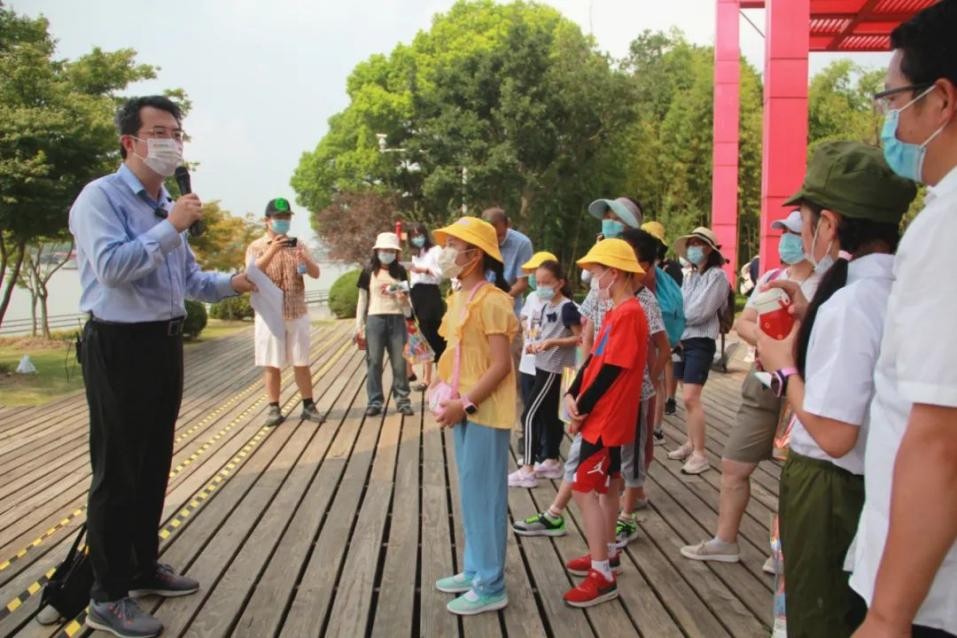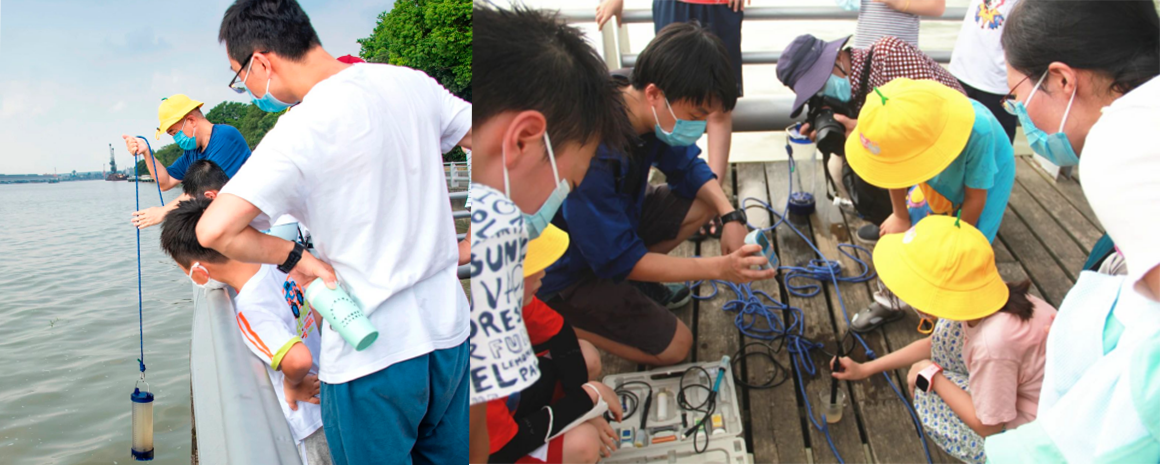East side of 7th Floor, No. 3663, North
Zhongshan Road, Shanghai, China, 200062
Tel: +86 21 6223 2322
www.smile.ecnu.edu.cn
Introduction
The Wujing section of the Huangpu River, known as Shanghai's mother river, features a beautiful "L" shaped bend. As the surrounding ecological environment continues to improve, the reputation of "The First Bay of the Pujiang" is becoming increasingly well-known. This case study introduces the green education or climate change education in Wujing Town, focusing on a humanistic walking route that starts from the First Bay of the Pujiang Park and follows the riverbank for approximately 2 kilometers to Lanxiang Lake.
The First Bay of the Pujiang Civil Practice Belt "Environmental Issues Observation" Humanistic Walk
The route is a blend of cultural, technological, and ecological elements. The First Bay of the Pujiang Park, themed around landscape forest belts and wetlands, features an open river channel and unique scenery. Lanxiang Lake, covering an area of 40 hectares, is the largest artificial lake in Minhang. It extends 1 kilometer inland from the Huangpu River's corner, enhancing the extensibility and openness of the First Bay of the Pujiang riverside ecological corridor.
Interactive Learning with Questions
Zhang Yong, the head of the Environmental Science Department at East China Normal University's School of Ecology and Environment, leads the walk, engaging children with carefully designed questions such as the width and depth of the Huangpu River, the location of the flood prevention wall, water quality classification, the role of tidal flats, and why Wujing has not experienced floods in the past decade. He also discusses the importance of wilderness and weeds in cities.

The professor explains the Ecological Characteristics of the Huangpu River
During the walk, children are encouraged to learn about the ecological features of the Huangpu River, including the changes in the direction of the tidal-controlled river, water quality levels, water depth conditions, and the philosophy behind the construction of river embankments. One parent shared on social media that their child gained a lot from the experience, walking 9390 steps and breaking their summer record without fear of the hot sun or rain.
Hands-on Practice: Sowing the Seeds of Science
The most interesting part for the children was the water sampling activity. Under the guidance of teaching assistants and volunteers from East China Normal University, over 40 primary and secondary school students were divided into 9 groups to collect water samples from the Huangpu River. Using professional instruments, they monitored and compared indicators such as water temperature, pH, dissolved oxygen (DO), and conductivity.

Water Sampling and Quality Monitoring
After collecting the water samples, the children learned which indicators to measure first, with dissolved oxygen being a priority due to its rapid dissipation. The children were shown how to interpret the data from the instruments, with the "little teachers" on site explaining the significance of the smiles on the instrument, indicating sufficient dissolved oxygen levels, and answering various ecological and environmental questions.
Civil Practice: Linking Ecological Spaces
The First Bay of the Pujiang Civil Practice Belt "Environmental Issues Observation" humanistic walk is a significant part of Shanghai's "One River, One River" strategic plan. It links key ecological spaces such as the First Bay of the Pujiang Park, Wujing Park, and Pujiang Country Park, forming a network of civil practice positions that integrate cultural display, public service, civilization cultivation, and volunteer service functions.
Conclusion
The First Bay of the Pujiang Civil Practice Belt humanistic walk is an effective way to engage children in environmental education. It allows them to learn about environmental protection, understand local ecological resources, and foster a love for their hometown. This initiative, co-sponsored by China University MOOC Environmental Issues Observation Course, Wujing Town Civilization Office and Community School, China University Ecological Civilization Education Alliance, and East China Normal University Environmental Education Training Center, has been well-received, with online registration spots being quickly filled. The event has been running for over three years, with this being the 23rd installment, and it is set to continue.
Provided by Juanjuan Dai, the Party Secretary of the Community School of Wugenzhen Town, Minhang District